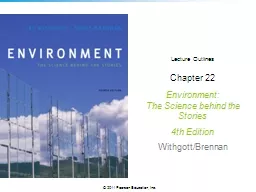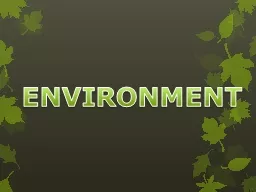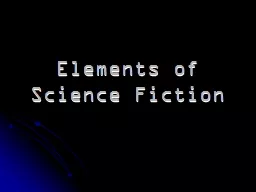PPT-Lecture Outlines Chapter 22 Environment: The Science behind the Stories
Author : calandra-battersby | Published Date : 2019-11-06
Lecture Outlines Chapter 22 Environment The Science behind the Stories 4th Edition WithgottBrennan This lecture will help you understand The types of waste we generate
Presentation Embed Code
Download Presentation
Download Presentation The PPT/PDF document "Lecture Outlines Chapter 22 Environment:..." is the property of its rightful owner. Permission is granted to download and print the materials on this website for personal, non-commercial use only, and to display it on your personal computer provided you do not modify the materials and that you retain all copyright notices contained in the materials. By downloading content from our website, you accept the terms of this agreement.
Lecture Outlines Chapter 22 Environment: The Science behind the Stories: Transcript
Download Rules Of Document
"Lecture Outlines Chapter 22 Environment: The Science behind the Stories"The content belongs to its owner. You may download and print it for personal use, without modification, and keep all copyright notices. By downloading, you agree to these terms.
Related Documents














![[READ] Learn English Through Stories: 16 Stories to Improve Your English Vocabulary Learn](https://thumbs.docslides.com/1006295/read-learn-english-through-stories-16-stories-to-improve-your-english-vocabulary-learn-english-through-stories-16-stories-to-improve-your-english-grammar-and-english-vocabulary.jpg)